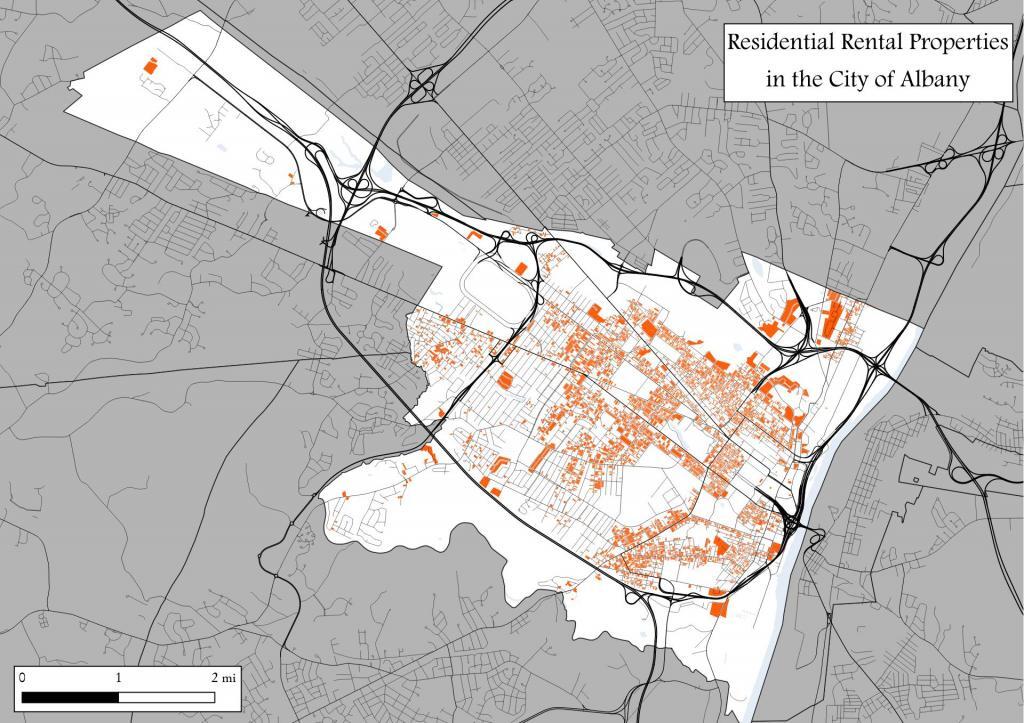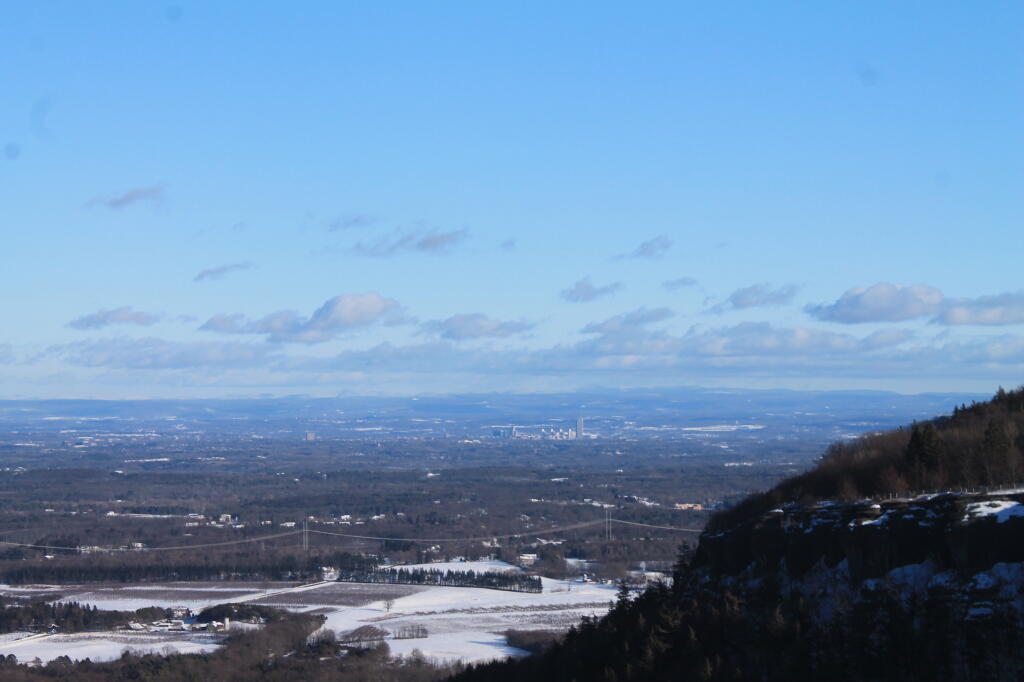Search Results for: city of albany
Areas Developed in the City of Albany, 1986-2021
This is a rough draft of a map I want to continue to refine but here is the R code here: https://github.com/AndyArthur/r_maps_and_graphs/blob/main/Albany%20Development%201986%20to%202021.R
Residential Rental Properties in the City of Albany
Lately there has been a proposal to enact a form of rent stability enhancement known as Good Cause Eviction in the City of Albany. This would ensure renters across the city would be able to maintain their homes, while limiting future rent increases for existing tenants and increasing neighborhood stability. Some neighborhoods in Albany would be greatly benefited by such regulations, although it would come at the cost of higher upfront rents for new tenants and lower profits for landlords with large numbers of long-term tenants.
Data Source: Albany County Property Tax ArcMap REST/SERVICE, showing "PROP_CLASS" IN ('215','220','230','281','411')
Land Use in the City of Albany 🏙
| Class | Description | Acres | Percent |
| 82 | Cultivated Crops -areas used for the production of annual crops, such as corn, soybeans, vegetables, tobacco, and cotton, and also perennial woody crops such as orchards and vineyards. Crop vegetation accounts for greater than 20% of total vegetation. This class also includes all land being actively tilled. | 3 | 0.0% |
| 52 | Shrub/Scrub- areas dominated by shrubs; less than 5 meters tall with shrub canopy typically greater than 20% of total vegetation. This class includes true shrubs, young trees in an early successional stage or trees stunted from environmental conditions. | 14 | 0.1% |
| 95 | Emergent Herbaceous Wetlands- Areas where perennial herbaceous vegetation accounts for greater than 80% of vegetative cover and the soil or substrate is periodically saturated with or covered with water. | 26 | 0.2% |
| 31 | Barren Land (Rock/Sand/Clay) – areas of bedrock, desert pavement, scarps, talus, slides, volcanic material, glacial debris, sand dunes, strip mines, gravel pits and other accumulations of earthen material. Generally, vegetation accounts for less than 15% of total cover. | 110 | 0.8% |
| 90 | Woody Wetlands- areas where forest or shrubland vegetation accounts for greater than 20% of vegetative cover and the soil or substrate is periodically saturated with or covered with water. | 158 | 1.1% |
| 42 | Evergreen Forest- areas dominated by trees generally greater than 5 meters tall, and greater than 20% of total vegetation cover. More than 75% of the tree species maintain their leaves all year. Canopy is never without green foliage. | 215 | 1.5% |
| 71 | Sedge/Herbaceous- Alaska only areas dominated by sedges and forbs, generally greater than 80% of total vegetation. This type can occur with significant other grasses or other grass like plants, and includes sedge tundra, and sedge tussock tundra. | 267 | 1.9% |
| 11 | Open Water- areas of open water, generally with less than 25% cover of vegetation or soil. | 270 | 1.9% |
| 81 | Pasture/Hay-areas of grasses, legumes, or grass-legume mixtures planted for livestock grazing or the production of seed or hay crops, typically on a perennial cycle. Pasture/hay vegetation accounts for greater than 20% of total vegetation. | 344 | 2.5% |
| 41 | Deciduous Forest- areas dominated by trees generally greater than 5 meters tall, and greater than 20% of total vegetation cover. More than 75% of the tree species shed foliage simultaneously in response to seasonal change. | 628 | 4.5% |
| 43 | Mixed Forest- areas dominated by trees generally greater than 5 meters tall, and greater than 20% of total vegetation cover. Neither deciduous nor evergreen species are greater than 75% of total tree cover. | 1,031 | 7.3% |
| 24 | Developed High Intensity-highly developed areas where people reside or work in high numbers. Examples include apartment complexes, row houses and commercial/industrial. Impervious surfaces account for 80% to 100% of the total cover. | 2,093 | 14.9% |
| 21 | Developed, Open Space- areas with a mixture of some constructed materials, but mostly vegetation in the form of lawn grasses. Impervious surfaces account for less than 20% of total cover. These areas most commonly include large-lot single-family housing units, parks, golf courses, and vegetation planted in developed settings for recreation, erosion control, or aesthetic purposes. | 2,206 | 15.7% |
| 22 | Developed, Low Intensity- areas with a mixture of constructed materials and vegetation. Impervious surfaces account for 20% to 49% percent of total cover. These areas most commonly include single-family housing units. | 3,148 | 22.4% |
| 23 | Developed, Medium Intensity -areas with a mixture of constructed materials and vegetation. Impervious surfaces account for 50% to 79% of the total cover. These areas most commonly include single-family housing units. | 3,522 | 25.1% |
City of Albany
Dan Plaat talks about the mayor’s race in the City of Albany
Dan Plaat talks about the mayor’s race in the City of Albany
4/21/21 by The Focus on Albany Show
Dan Plaat talks about the mayor’s race in the City of Albany
Dan Platt is a really smart guy. While as a Green Party candidate he’s not likely to win against the machine he certainly will advance many good ideas into the debate.
Historic Places Designated by City of Albany Historic Resources Commission
This interactive map shows the location of Historic Properties designated by the City of Albany Resources Commission. Click to learn more about each property.
Data Source: https://gis.albanyny.gov/arcgis/rest/services/Cultural_Resources/Historic_Districts/MapServer

